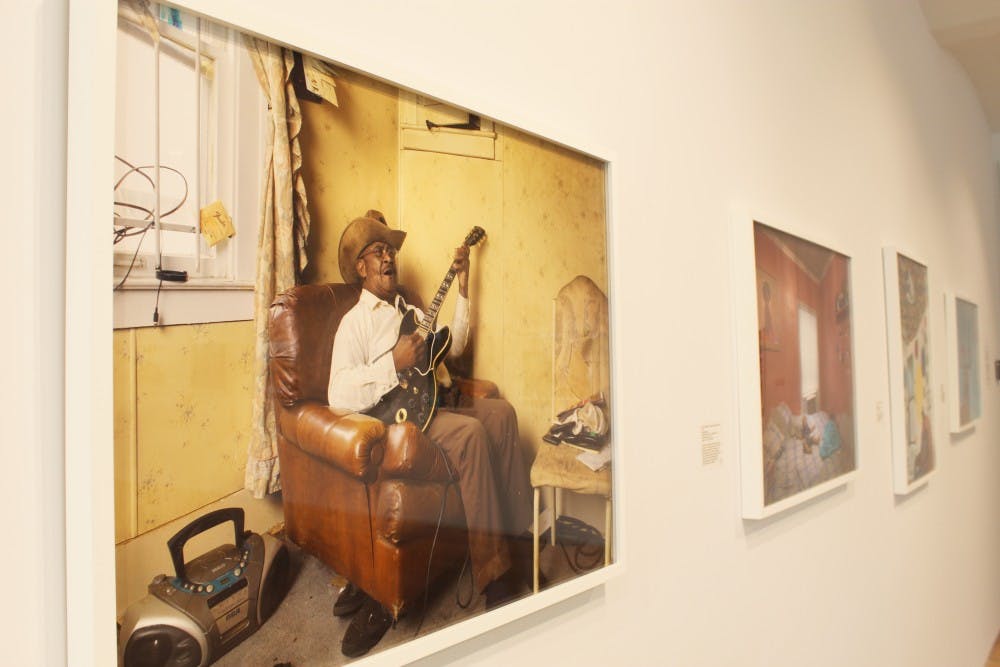When the word “Detroit” is typed into Google’s search engine, one suggested question that pops up about the Michigan city is whether or not it’s abandoned. With a population of 674,104 people, the city is definitely not deserted.
Capturing the residents of the city through photos, Chicago-based photographer Dave Jordano has brought the Motor City to Bloomington in his photo series: “Detroit: Unbroken Down.”
Presented in the wide open, sunlit space of Pictura Gallery at the FAR Center for Contemporary Arts, Jordano’s 15 framed portraits lead the viewer through an uncommon narrative of what many people believe to be a broken city. Instead of empty streets and run-down houses, there’s sleeping children, friends riding bikes and an old man wearing a cowboy hat, strumming a guitar.

“I started around 2010 seeing all these books coming out, about Detroit and the subject matter was all about the ruination of the city,” Jordano said. “The abandonment, the dystopian landscape. None of the books I saw had any people in it. It was just all about the empty ruins. And that was really disturbing to me.”
Jordano, who was born in Detroit in the 1940s and left in the late 70s, said it was a real eye opener for him to see the city portrayed like this. Although he hadn’t been back in decades, Jordano said he wanted to tell a different story, one that was about the people.
Over the course of five years, Jordano made about 45 trips to Detroit and got to know many people living in some of the poorest parts of the city. He said his efforts mainly involved learning how people in these neighborhoods were living and striving, and what they thought about their home.
The portrait of the man sitting in a large leather chair while playing the guitar is titled “Glemie Playing the Blues.” Glemie, according to the photo’s placard, is a retired truck driver and skilled blues singer, but hunts raccoons which he sells as food to clients. The extra income supplements his small retirement benefits.
“It’s really interesting." gallery director Lauren Kniss said. "There’s great captions and stories behind each of these photos because Dave sat and talked to these people. So many people have fled Detroit, and these are the people that are digging their heels in and they’re staying.”

Since Detroit emerged from bankruptcy in 2013, buildings and people have come back to downtown, but most of these people are white millennials who got good jobs, Jordano said.
“If you go a mile outside the central downtown area, it’s status quo,” Jordano said. “They’re all black, they’re all poor, and they’re living hand to mouth.”
“The tone of the project is hopeful, without simplifying the story or shying away from the harder realities of economic struggle,” according to the gallery’s curatorial statement. “For every image that depicts decline, there’s another image countering the scales, showing generosity, friendship, creativity or perseverance. And sometimes, these two aspects exist in the same image.”
“Detroit: Unbroken Down” will be on display at the FAR Center until Dec. 5. More information regarding the series and the gallery’s hours can be found online.




